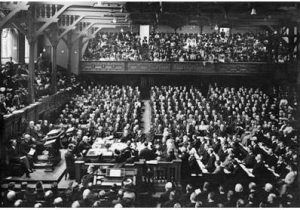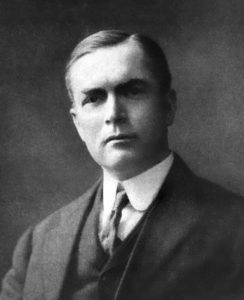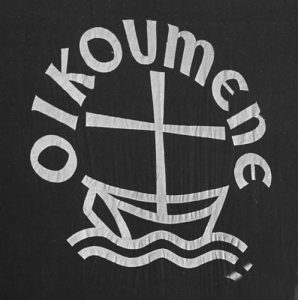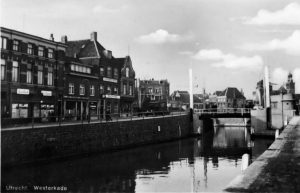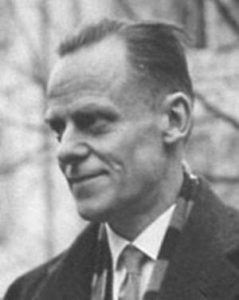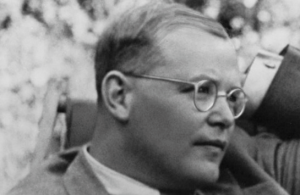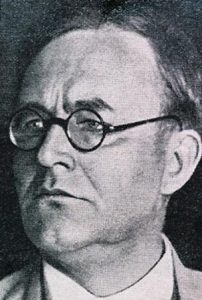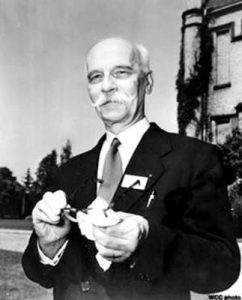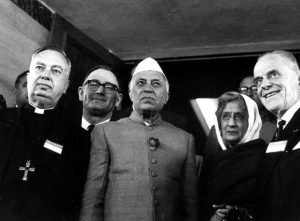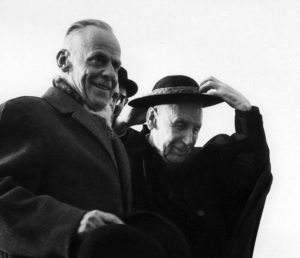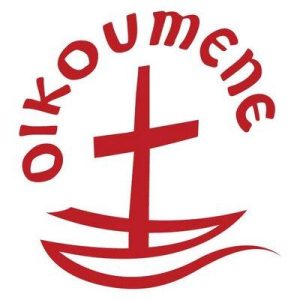The beginnings
The WCC stems mainly from Protestant youth and Church organisations who reflected on political and social challenges of the early 20th century in a world that had become inexplicable and violent because of multiple economic trades. Colonisation movements often linked to the search for raw material raised many questions.
The Edinburgh Conference on missions held in 1910 and presided by John Mott (Nobel Peace Prize in 1946) showed the dire need for an ecumenical reflection on how to overcome the numerous particularities of Churches calling themselves Reformed.
The work was continued by two international reflection groups. One claimed to follow the liberal theological trend and was quickly set up. It dealt with Life and work and was focused on social services for the destitute, on the need for solidarity and of appropriate means. The other was set up later and dealt with Faith and Order. It reflected on doctrinal problems involving loyalty to Biblical texts. Their works resonated largely in the youth organisations, especially the Young Men’s Christian Association (YMCA), the Young Women’s Christian Association (YWCA) and their student branch, namely the World Student Christian Federation (WCSF). Soon after they were joined by the Anglican Church and several Orthodox Churches that had become autocephalous after the Russian Revolution, and placed under the protection of the Constantinople Patriarchate after 1920.
In 1937 the ecumenical movements Faith and Order and Life and Work held common plenary assemblies in Edinburgh and in Oxford, and decided to work together within the same organisation, namely the World Church Council.
From the statutory meeting in Utrecht in 1938 to the constituent assembly in Amsterdam in 1948
The constitutive general assembly was held in Utrecht in 1938. In 1941, it entrusted William Temple (1881-1944), the then Anglican archbishop of York and so to be Archbishop of Canterbury, with designing the structures to effectively operate the WCC. Willem Visser’t Hooft, then secretary general of the WCSF was appointed interim secretary general of the WCC in 1938.
When World War II broke out in 1939 the project could not be carried out. Willem Visser’t Hooft, however, felt he had to be vigilant and developed active assistance for Jews and resistants fleeing away from Germany and taking refuge particularly in Geneva.
The project was revived immediately after the war though not without some difficulties.
Accepting German Protestant Churches in the WCC posed a problem. The Confessing Church (bekennde Kirche) at the synod in Barmen (Germany in 1934) and later at the conference in Fanớ (Denmark in 1935) strongly opposed the German Church authorities who had pledged allegiance to Hitler and accepted to be called Deutschen Christen (German Christians), thus being submitted to the Nazi regime. That is why the Confessing Church took part in the 1938 project. In 1945, however, the blindness and involvement of German Churches with Nazism could not be ignored.
Together with those in charge of ecumenical organisations committed to fighting Nazism, such as Willem Visser’t Hooft, William Temple, Pierre Maury among others, German Churches wrote a declaration of guilt (Schuldbekenntnis) at the Synod in Stuttgart in October 1945, also a meaningful manifesto for ecumenism missions. The WCC could then be progressively set up.
In 1946 a Commission of Churches on International Affairs was set up in Geneva and closely related to the United Nations Organisation (UN) whose statues had just been promulgated, as those of the WCC to be.
During the year 1946 an Ecumenical Institute was also created in Bossey, a suburb of Geneva, and partly financed by the Rockefeller Foundation. As early as 1947 their diplomas were accredited by the University of Geneva by an association agreement.
In August 1948 in Amsterdam, as the Cold War started, the first General Assembly of the WCC was opened. The theme was based on Karl Barth’s work, Man’s disorder and God’s Design. YMCA/YWCA, the WCSF, the World Alliance for the Unity of Churches and the International Missionary Council took part in the event. 147 Churches from 44 countries were involved in the new institution. WillemVisser’t Hooft was elected secretary general.
When it was established the connections between the WCC and the Roman Catholic Church were non-existent, even hostile in so far as the latter considered itself the only possible visible unifying element. Members of the Orthodox Church, however, attended the meeting in Amsterdam. Indeed, as early as 1920 some had joined the Faith and Order movement following the encyclical of the synod in Constantinople.
Organisation and mandates of the WCC
By its statutes the ecumenical World Council of Churches is neither a federation of member churches, nor a government of Churches. Its is a research and service organ for national or local ecclesial communities or linked to regional cultural areas. It is financed by member Churches.
The head office of the WCC is in Geneva in a building where separate organisations are housed, such as the World Lutheran Federation and the World Reformed Alliance (created in 1875). It brings together mainly English-speaking Reformed Churches, either Presbyterian or, more recently, Congregationalist. In 2010 it became the World Communion of Reformed Churches, and its head office has been in Hanover, Germany, since 2014.
The regulating authority of the WCC is the Assembly of Member Churches. It meets regularly, every seven or eight years, and elects a Central Committee with representatives of Member Churches. The Committee elects the members of the Executive Committee among its peers.
The General Secretary ensures that the mandates given by the general assembly are implemented. It co-ordinates the work of the various departments where permanent workers, clerks and lay persons appointed by the Council work, such as Faith and Order, Missions and Evangelisation, Mutual Aid, Assistance to the refugees.
In 1948 after the constitutive Assembly in Amsterdam, the plenary assemblies met in various countries all over the world: Evanston (USA) 1954 ; New Delhi (India) 1961 ; Upsala (Sweeden) 1968 ; Nairobi (Kenya) 1975 ; Vancouver (Canada) 1983 ; Canberra (Australia) 1991 ; Harara (Zimbabwe) 1998 ; Porto Alegre (Brasil) 2006 ; Seoul (South Corea) 2013.
The Central Committee was headed by Willem Visser’t Hooft (Reformed Church, Netherlands) 1948-1966 ; Eugène Carson Blake (Presbyterian Church, USA) 1966-1972 ; Philip A. Potter (Methodist Church of the Dominican Republic) 1972-1984 ; Emilio Castro (Methodist Church of Uruguay) 1985-1992 ; Konrad Raiser (Evangelische Kirche in Deutschland) 1993-2003 ; Samuel Kobia (Methodist Church of Kenya) 2004-2009. Olav Fykse Tveil (Lutheran Church of Norway) took over the position in 2010.
Many works and important missions have been undertaken, among which support to Churches in South Africa in the aftermath of Apartheid, the dialogue with Eastern countries since the 1960s, or the commitment to South American countries – sometimes hotly debated.
The WCC strongly linked to the European Ecumenical Commission for Church and Society (EECCS) has its head office in Brussels since 1960. The Commission was created in the early 1950s on the initiative of André Philip, among others. Its aim was to bring together Church officials and senior civil servants to reflect on building a reconciled Europe. It played a key role in associating the United Kingdom to the European Community in 1972. The WCC and the EECCS worked together, especially within the World Conference on Churches and Society held in Geneva in 1966.
The WCC in the 21st century
Great ecumenical progress was made during the troubled periods in the 20th century. They were linked to the animated theological reflection and to the troublesome problems of our present world which were raised by a number of participants, notably within the WCSF where challenging dialogues developed between World War I and World War II.
Since the 1970s the progressive deregulation of financial markets and the growth of worldwide economic trade has notably modified the aspect of social problems. The ecumenical response has to evolve.with the situations. But whatever changes may be linked to the arrival and departure of some member Churches, the WCC holds its place in the public space, be it local, national or linked to cultural areas. It debates a number of ethical problems, especially by its involvement in environmental and ecological problems, to justice and peace problems, cf. the Justice, peace and Integrity of Creation theme discussed during a number of meetings.
Its presence and vigilance are strong at many international gatherings whether organised by the WCC or not. It also publishes many documents.

